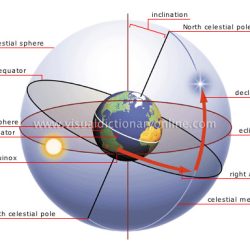The sidereal months of Sagittarius and Capricorn constitute Hemanta Rithu. The coldness has not left Kerala. This Hemanta Rithu will be there till the 12th of February.
Sisira Rithu, the sidereal months of Aquarius and Pisces, is very hot indeed. It normally starts from the 13th of February to the 13th April ! During this sixth season of India, hot spells are normal and more than 100 people perished last year due to sunstroke.
Now it is still cold in the morning and even during midday. No need for air conditioners during this season.
Evening is also characterised by cold winds. The Sun will be transiting Sravana, Alpha Aquilae, initiating Thiruvonam Njattuvela tomorrow.
Amongst the six Rithus or seasons, Vasanta ( Medam & Edavam ) is comparitively less hot, Greeshma ( Gemini and Cancer ) and Varsha ( Leo and Virgo ) are rainy seasons, Sarat ( Libra and Scorpio ) is less rainy, Hemanta ( Sagittarius and Capricorn ) is cold and dry and Sisira ( Aquarius & Pisces ) is very hot indeed !
Correspondence between Music and Art
Herbert Read knew the correspondence between Music and Art. ” All Art tends to Music”, he averred. Human beings are inseparable from their surroundings. It so happens that dusk, dawn, the season, the nature, the lightning, the thunder – all these affect the mood of Man. This mood gives rise to Rasa and every possible Rasa in connection with these circumstantial surroundings has been found to be conveyed through Raga. The world of Ragas, therefore, has all the variety of Life and experiences of Man. This is so true of Indian Music. Seasons or Rithus are a dimension of the vast game of Life and Creation !
The Six Seasons of Indian Philosophy are ruled by Planets
For instance,
Vasanta Rithu is ruled by Venus
Greeshma by Mars and Sun
Varsha by the Moon
Sharath by Mercury
Hemanta by Jupiter
Sisira by Saturn
The Law of Correspondences state that the Six Seasons are related to the six Chakras, according to Kundalini Yoga. The Highest Chakra, the Sahasrara, the Thousand Petalled Lotus, is beyond Time and transcends everything. The lower six Chakras get mildly activated during the six seasons –
Ajna Chakra in Vasanta
Vishuddha in Greeshma
Anahata in Varsha
Manipura in Sharath
Swadhistana in Hemanta
Muladhara in Sisira
Sisira Rithu ( Kumbha & Meena ) is also the mango season, when mangoes are plenty in Kerala. Mangoes are used in Fish curry, in pickles and in all curries. Mango is a substitute for tamarind in curries. Mango pickles are of many types. Tender mangoes make excellent pickle and are known as Vadu Mango Pickle. Cut Mango pickles goes by the name Chethu Manga. Mangoes are dried and pickled. Ripe mangoes are eaten. With red chilli poweder, ripe mangoes are an excellent dish. Special type of pickle comes from Andhra known as Avakkai.
Tender mangoes are also pickled in brine.
India leads in the production of mangoes. 13.5 million tonnes. China is second at 3.7 million tonnes. Mango is a fruit indigenous to the Indian subcontinet and is the national fruit of India, Pakistan and the Philippines. The word mango is derived from the Malayalam manga .
Widely used in Cuisine, chutneys are made from sour, unripe mangoes. Mango Lassi, a popular drink in S Asia, is made by mixing ripe mangoes, curd and sugar. Mangoes can be eaten raw with salt. A cooling summer drink called panna comes from mangoes. Green mangoes can be used as mango salad with dried shrimp and fish sauce.
Mango is rich in phytochemicals and nutrients. Also vitamins and minerals. The antioxidant vitamins A, C and E compose 25%, 76% and 9% of the DRI ( Dietary Reference Intake ) in a 165 gms serving. Mangoes also contain Vitamin B6, Vitamin K, B vitamins and other nutrients.


